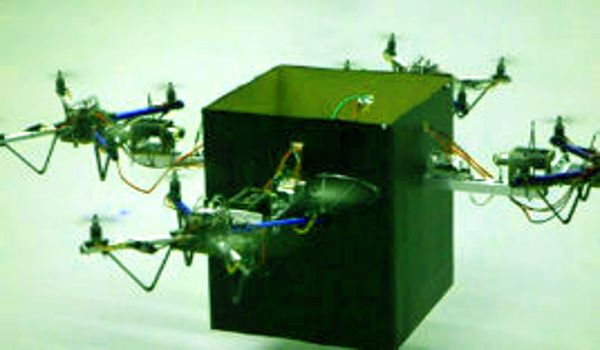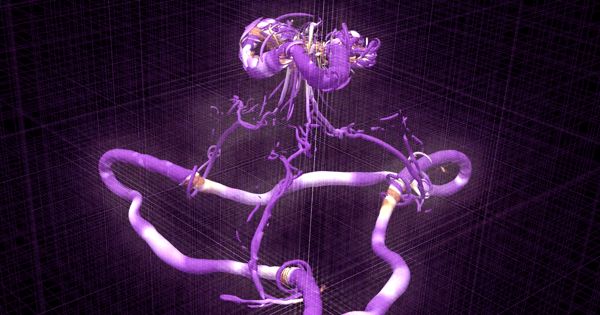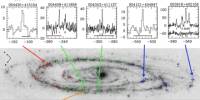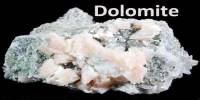Researchers developed a new model that allows engineers to incorporate the physics of an entire vortex collision into their design codes to aid in the development of aircraft that can better handle violent turbulence.
Passengers on a flight to Australia in 2018 were subjected to a terrifying 10-second nosedive when a vortex trailing their plane crossed into the wake of another flight. The airline suspected that the collision of these vortices caused violent turbulence, which resulted in a free fall.
Purdue University researchers have developed a modeling approach that simulates the entire process of a vortex collision at a reduced computational time to aid in the design of aircraft that can better maneuver in extreme situations. This physics understanding could then be incorporated into engineering design codes, allowing the aircraft to respond appropriately.
The current simulations used by aircraft designers capture only a portion of vortex collision events and necessitate extensive data processing on a supercomputer. Because it is difficult to simulate everything that happens when vortices collide, aircraft designs have been limited.
To help build aircraft that can better handle violent turbulence, researchers developed a new model that allows engineers to incorporate the physics of an entire vortex collision into their design codes.
Engineers could design aircraft such as fighter jets capable of more abrupt maneuvers or helicopters that can land more safely on aircraft carriers using more realistic and complete simulations, according to the researchers.
“In extreme conditions, aircraft cannot rely on simple modeling,” said Carlo Scalo, an associate professor of mechanical engineering at Purdue with a courtesy appointment in aeronautics and astronautics. “To troubleshoot some of these calculations, it can take a month of running them on a thousand processors. Faster computation is required for aircraft design.”
Engineers would still need a supercomputer to run the model developed by Scalo’s team, but they would be able to simulate a vortex collision in a tenth to a hundredth of the time and with far fewer computational resources than are typically required for large-scale calculations.
The model is known as a “Coherent-vorticity-Preserving (CvP) Large-Eddy Simulation (LES)” by the researchers. This model’s four-year development is summarized in a paper published in the Journal of Fluid Mechanics.
“The CvP-LES model is capable of capturing super complex physics without having to wait a month on a supercomputer because it already incorporates knowledge of physics that extreme-scale computations would have to meticulously reproduce,” Scalo said.

Jean-Baptiste Chapelier, a former Purdue postdoctoral researcher, led the two-year model development process. Another Purdue postdoctoral researcher on the project, Xinran Zhao, performed complex, large-scale computations to demonstrate the model’s accuracy. Using more than a billion points, the researchers were able to create a more detailed representation of the problem. In comparison, a 4K ultra high definition TV displays an image using approximately 8 million points.
Building on this foundation, the researchers used the CvP-LES model to simulate the collision events of two vortex tubes known as trefoil knotted vortices, which are known to trail the wings of a plane and “dance” when they reconnect.
This is a very difficult dance to capture. “When vortices collide, they collide violently, causing a great deal of turbulence. It’s very difficult to simulate computationally because you have an intense localized event that occurs between two structures that appear pretty innocent and uneventful until they collide “Scalo stated.
The team processed data on the thousands of events that occur when these vortices dance and built that physics knowledge into the model using the Brown supercomputer at Purdue for mid-size computations and Department of Defense facilities for large-scale computations. The entire collision dance was then simulated using their turbulence model.
Engineers could simply run the ready-made model to simulate vortices for any length of time, according to Scalo. Physicists could also reduce the size of the model for fluid dynamics experiments.
“What’s really clever about Dr. Scalo’s approach is that it uses information about the flow physics to decide the best tactic for computing the flow physics,” said Matthew Munson, program manager for Fluid Dynamics at the Army Research Office, part of the United States Army Combat Capabilities Development Command’s Army Research Laboratory.
“It is a wise strategy because it makes the solution method applicable to a broader range of regimes than many other approaches. There is a lot of potential for this to have a real impact on the design of vehicle platforms and weapons systems that will allow our soldiers to complete their missions successfully.”
Scalo’s team will continue its investigation of complex vortical flows using Purdue’s newest community cluster supercomputer, Bell. In addition, the team is collaborating with the Department of Defense to apply the CvP-LES model to large-scale test cases involving rotorcraft such as helicopters.
“If you can accurately simulate thousands of events in flow, like those coming from a helicopter blade,” Scalo said, “you can engineer much more complex systems.”
















